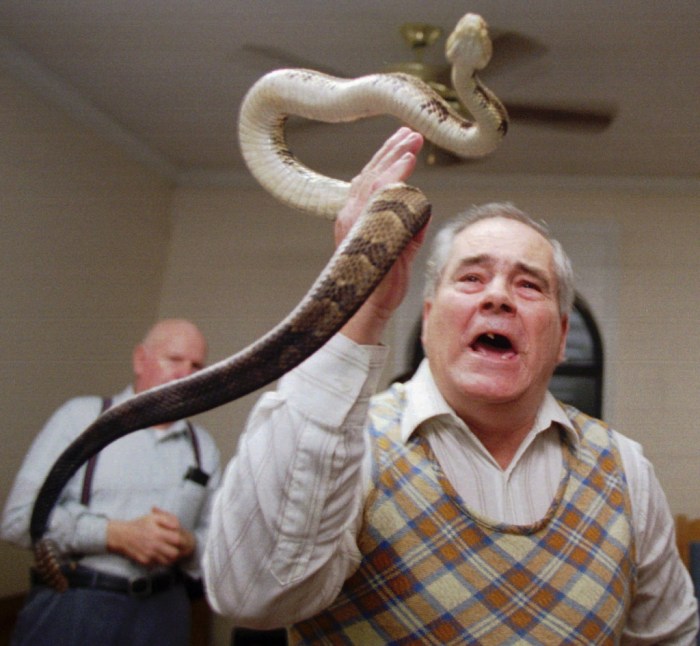
How to handle his snake yumi sin and fit kitty – Welcome to the fascinating world of snake ownership! Embark on a journey of discovery as we delve into the intricacies of handling and caring for your beloved Yumi Sin and Fit Kitty. From understanding their natural instincts to troubleshooting common issues, this guide will equip you with the knowledge and skills to foster a thriving bond with your reptilian companions.
Techniques for Handling His Snake
Handling a snake requires a combination of knowledge, skill, and safety precautions. Understanding the snake’s behavior, body language, and potential risks is crucial. Here are detailed guidelines to safely handle a snake:
Proper Body Language
Maintain a calm and confident demeanor. Avoid sudden movements or loud noises that may startle the snake. Keep your body relaxed and avoid making eye contact, as snakes perceive direct stares as a threat. Position yourself at a safe distance and slowly approach the snake.
Use of Snake Hooks
Snake hooks are specialized tools used to gently lift and control snakes. Choose a hook that is appropriate for the size and temperament of the snake. Handle the hook with precision, using slow and steady movements to avoid injuring the snake.
Supporting the Snake
When lifting a snake, support its entire body by using your other hand or a snake bag. Avoid applying pressure to the snake’s spine or ribs. Handle the snake securely but gently, allowing it to rest comfortably in your grip.
Handling Bites
Although snake bites can be dangerous, they can be prevented by following proper handling techniques. In the event of a bite, remain calm and seek medical attention immediately. Apply pressure to the wound and elevate the bitten area. Do not attempt to suck out the venom or cut the wound.
Care and Maintenance of His Snake

Maintaining a snake as a pet requires understanding its specific needs and providing an optimal environment for its well-being. This includes providing the appropriate habitat, ensuring proper feeding and hydration, and monitoring for potential health issues.
The care and maintenance of a snake involves several key aspects, each of which plays a crucial role in ensuring the snake’s health and longevity. These aspects include:
Habitat Requirements
- Enclosure Size:The enclosure should be spacious enough for the snake to move around comfortably and thermoregulate effectively.
- Substrate:The substrate should provide a comfortable and suitable surface for the snake to burrow and hide.
- Temperature Gradient:Snakes require a temperature gradient within their enclosure to allow them to thermoregulate by moving between warmer and cooler areas.
- Humidity:The humidity level in the enclosure should be appropriate for the snake’s species.
- Hiding Places:Snakes need secure hiding places to feel safe and secure.
Feeding and Hydration
- Diet:The snake’s diet should consist of live or frozen prey appropriate for its size and species.
- Feeding Schedule:The feeding schedule should be consistent and tailored to the snake’s age, size, and species.
- Hydration:Snakes need access to fresh water at all times.
Shedding
- Shedding Process:Snakes shed their skin periodically as they grow.
- Humidity:Proper humidity levels are essential for successful shedding.
- Rubbing:Snakes may rub against rough surfaces to aid in shedding.
Health Issues and Preventive Measures
- Respiratory Infections:Respiratory infections are common in snakes and can be caused by various factors.
- Skin Infections:Skin infections can occur due to improper enclosure hygiene or injuries.
- Parasites:Snakes can be susceptible to various parasites, such as mites and worms.
- Preventive Measures:Regular veterinary check-ups, proper enclosure maintenance, and quarantine procedures can help prevent health issues.
Understanding His Snake’s Behavior
Understanding your snake’s natural instincts and behaviors is essential for proper care and handling. Snakes are fascinating creatures with unique body language and communication patterns. By observing your snake’s behavior, you can learn to interpret its needs and respond appropriately.
Analyzing Natural Instincts and Behaviors
- Snakes are predators and have a natural instinct to hunt and eat small prey.
- They are ambush predators, meaning they lie in wait for their prey to come close before striking.
- Snakes are ectothermic, meaning they rely on external heat sources to regulate their body temperature.
- They are nocturnal, meaning they are most active at night.
- Snakes use body language to communicate, such as hissing, coiling, and flattening their bodies.
Identifying Signs of Stress, Aggression, or Illness
- Stress:Hissing, flattening of the body, coiling, hiding, and refusing to eat.
- Aggression:Striking, biting, and coiling defensively.
- Illness:Lethargy, weight loss, discharge from the eyes or nose, and difficulty shedding.
Interpreting Body Language
- Coiling:Coiling can indicate aggression or fear.
- Flattening:Flattening the body can be a sign of aggression or stress.
- Hissing:Hissing is a warning sign and should be taken seriously.
- Flicking Tongue:Snakes use their tongues to taste the air and gather information about their surroundings.
- Striking:Striking is a defensive behavior and should be avoided.
Bonding with His Snake

Building a positive relationship with a snake requires patience, understanding, and respect. Regular handling and enrichment activities play a crucial role in fostering a bond between the owner and the snake.
Establishing trust is paramount. Handle the snake gently and calmly, avoiding sudden movements or loud noises. Over time, the snake will associate handling with positive experiences, reducing stress and promoting a sense of security.
In terms of how to handle his snake yumi sin and fit kitty, it’s important to establish a routine and be consistent. Check out how to handle his snake yumi sin and fit kitty for more detailed tips. Handling your snake yumi sin and fit kitty should be a positive experience for both you and your pet.
Enrichment Activities
- Provide a spacious enclosure:A well-sized enclosure allows the snake to explore, exercise, and engage in natural behaviors.
- Offer hiding spots:Snakes seek shelter to feel safe and secure. Provide multiple hiding spots within the enclosure.
- Create a temperature gradient:Snakes are ectothermic, meaning they rely on external heat sources to regulate their body temperature. Provide a heat source on one end of the enclosure and a cooler area on the other.
- Introduce toys:Toys, such as tunnels or balls, can provide mental and physical stimulation for the snake.
- Take the snake outdoors:Supervised outdoor excursions can expose the snake to different sights, sounds, and scents, enriching its environment.
Safe Interactions, How to handle his snake yumi sin and fit kitty
- Wash hands:Always wash hands before and after handling the snake to prevent the spread of bacteria.
- Support the snake:When handling, support the snake’s body with one hand while gently holding its head with the other.
- Avoid feeding time:Never handle the snake immediately before or after feeding to prevent regurgitation.
- Respect the snake’s space:Avoid excessive handling or disturbing the snake when it is resting or shedding.
- Seek professional help:If the snake shows signs of aggression or discomfort, consult a veterinarian or experienced snake handler.
Troubleshooting Common Issues: How To Handle His Snake Yumi Sin And Fit Kitty
Owning a snake can be a rewarding experience, but it also comes with potential challenges. It’s essential to be prepared for common issues that may arise and know how to handle them effectively.
Sure, you can do that, no problem! I can tell you how to handle your snake Yumi Sin and fit kitty, but I can also share some tips on how to increase your insurance agent productivity. Productivity is important for many jobs, including that of an insurance agent.
You can learn more about that here . After you’ve read that, you can come back here and I can tell you more about how to handle your snake Yumi Sin and fit kitty.
Identifying and addressing problems promptly will ensure the well-being of your snake and maintain a harmonious relationship with your pet.
Feeding Difficulties
- Snake refuses to eat:This could indicate a variety of issues, such as stress, illness, or improper feeding techniques. Try offering different food items, adjusting feeding times, and ensuring a stress-free environment.
- Snake regurgitates food:Regurgitation can occur due to overfeeding, improper feeding methods, or underlying health problems. Consult a veterinarian for a proper diagnosis and treatment.
Escape Attempts
Snakes are naturally curious and may attempt to escape their enclosure if given the opportunity. Ensure the enclosure is secure, with no gaps or loose fittings. Provide adequate hiding places and mental stimulation to prevent boredom.
Learn how to handle his snake yumi sin and fit kitty. Read this article for detailed tips on how to handle his snake yumi sin and fit kitty.
Aggression
- Defensive aggression:Snakes may become defensive if they feel threatened or stressed. Provide a calm and secure environment, avoid sudden movements, and respect their personal space.
- Feeding aggression:Some snakes may exhibit aggressive behavior during feeding time. Handle the snake carefully and ensure it’s not mistaken for food.
- Illness-related aggression:Illness or pain can make snakes more irritable. Seek veterinary attention if you notice unusual aggression or changes in behavior.
Importance of Professional Help
If you encounter any persistent or severe issues with your snake, it’s crucial to seek professional help from a qualified veterinarian specializing in reptiles. They can provide expert advice, diagnose underlying health problems, and recommend appropriate treatment options.
Last Point

Remember, snake ownership is a rewarding experience that requires dedication and care. By adhering to the principles Artikeld in this guide, you can create a harmonious environment for your snakes, ensuring their well-being and your own enjoyment. So, let’s dive right in and uncover the secrets to becoming a confident and responsible snake owner.
Answers to Common Questions
How often should I feed my snake?
The feeding frequency depends on the snake’s age, size, and species. Generally, young snakes need to eat more frequently, while adults can go longer between meals. Consult a veterinarian or experienced snake keeper for specific recommendations.
What are the signs of a healthy snake?
Healthy snakes have bright eyes, clean scales, and a good body weight. They are active and responsive to stimuli. If you notice any changes in your snake’s appearance or behavior, seek veterinary attention promptly.
How can I prevent my snake from escaping?
Ensure your enclosure is secure and escape-proof. Regularly inspect the enclosure for any potential escape routes and seal them off. Supervise your snake during handling and never leave it unattended outside of its enclosure.

